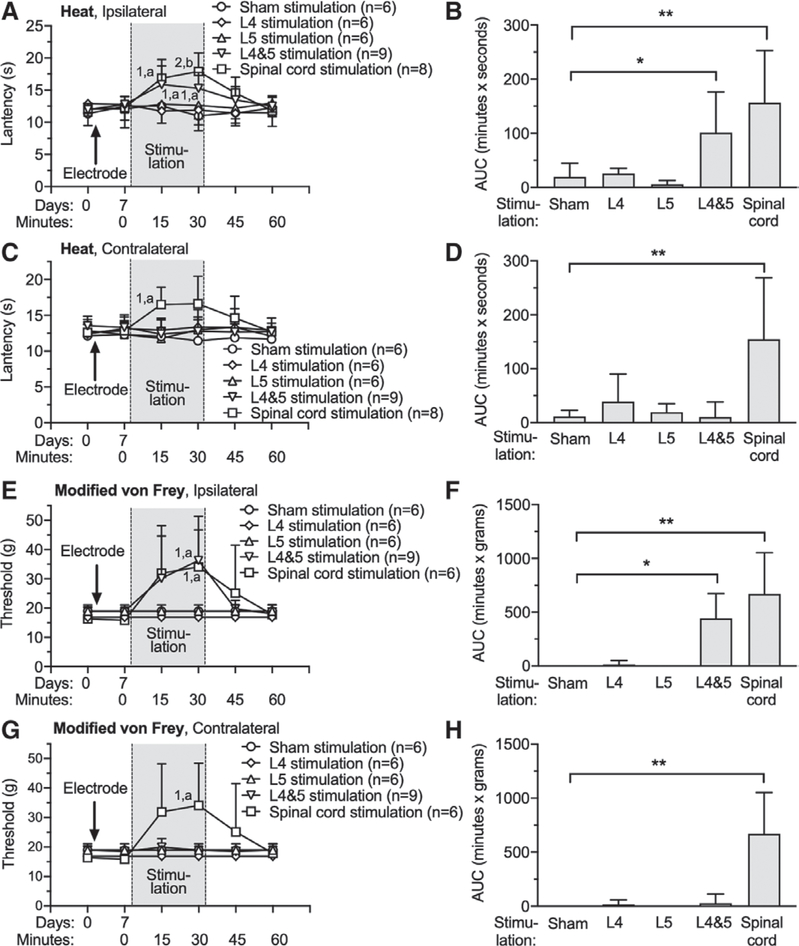Fig. 1.
Effects of dorsal root ganglion stimulation and spinal cord stimulation on nociceptive sensation in normal rats. Left panels show the time course for latency to respond to radiant heat applied to the plantar skin on the right foot (ipsilateral to the dorsal root ganglion stimulation placement [A]) and left foot (C), and to noxious mechanical stimulation (modified von Frey, right foot [E], left foot [G]). Dorsal root ganglion stimulation or spinal cord stimulation electrodes were implanted immediately after the baseline behavioral tests at day 0. Dorsal root ganglion stimulation or spinal cord stimulation was given 30 min and behavioral responses were monitored for another 30 min. Right panels (B, D, F, H) show the average of the area under the curve calculated for each rat for the time period during and 30 min after the dorsal root ganglion stimulation or spinal cord stimulation, normalized to the baseline just before stimulation. Results are means ± SD. Here and in other time sequence data, each timepoint was compared to the 0 time baseline for that group and to the same timepoint for the control group, and a planned comparison design was used for these post hoc tests. *P < 0.05, **P < 0.01 by the Tukey test after one-way ANOVA; 1, P < 0.05 and 2, P < 0.01 compared to data immediately before dorsal root ganglion stimulation; a, P < 0.05 and b, P < 0.01 compared to sham treatment group by the Dunnett test after two-way repeated measures ANOVA with Greenhouse–Geisser correction; n, number of animals.

